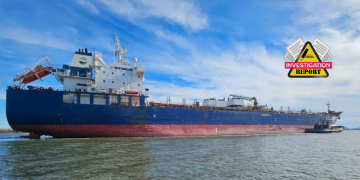The Gard P&I Club recently published an article alerting interested parties to the dangers associated with the liquefaction of chromite ore cargo originating from South Africa.
As explained, despite being categorized as a ‘Group C’ cargo in the International Maritime Solid Bulk Cargoes (IMSBC) Code, Gard’s recent experience in South Africa suggests that chromite ore may exhibit Group A properties including the potential to liquefy. Group A cargoes are cargoes which possess a hazard due to moisture that may result in liquefaction or dynamic separation if shipped at a moisture content in excess of their transportable moisture limit. Thus, Gard Club has issued the following recommendations:
It is crucial to engage charterers in early discussions if your vessel is nominated to carry chromite ore, as a cargo declaration classifying it as Group C may not be accurate, as seen in the above examples. The cargo may appear to be dry and granular when shipped, however, it may be prone to liquefaction at a subsequent stage. Some signs to look for:
-
-
splatter on the bulkhead of the cargo holds,
-
failed can tests,
-
fine nature of chromite ore cargo,
-
recent rainfall in the port,
-
MC & TML certificates provided but cargo still declared as Group C. Refer to our topic page on liquefaction for further details.
-
-
The cargo surface should be trimmed completely flat on completion of loading to minimize the risk of the cargo shifting.
-
During the voyage, the crew should regularly check the condition of the cargo. Any sign of cargo liquefaction such as flattening, shifting, free surface water, or vessel instability be seen as a need for urgent assistance not limited to seeking safe anchorage.





























































